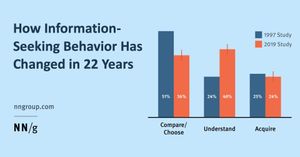A genome-wide association study (GWAS) has shed light on the genetic factors influencing glymphatic activity, which is linked to brain health and various neuropsychiatric conditions. The study identified 17 unique genome-wide significant loci and 161 candidate genes associated with the diffusion-tensor imaging analysis along the perivascular space (ALPS index), providing valuable insights for future neurobiological research.
The glymphatic system is integral for maintaining brain homeostasis by facilitating the clearance of metabolic waste, including damaging proteins such as beta-amyloid and tau. Dysfunction within this system has been implicated in various developmental neuropsychiatric disorders, such as attention-deficit/hyperactivity disorder (ADHD) and autism spectrum disorder (ASD), and neurodegenerative diseases like Alzheimer’s disease (AD). Despite the recognition of its importance, the genetic underpinnings of glymphatic activity have remained unclear.
The research was conducted using data from 31,021 individuals from the UK Biobank, forming the discovery cohort for the analyses. The teams utilized advanced statistical methods to analyze the ALPS index, providing insights applicable to both aging and young cohorts. The study design also included various replication cohorts, such as non-British individuals and participants from the Alzheimer’s Disease Neuroimaging Initiative (ADNI), ensuring the robustness of the findings.
Findings from the study uncovered significant genetic signals at multiple loci, indicating the potential for common genetic mechanisms influencing both glymphatic function and conditions like ventricular volumes and cerebrospinal fluid levels. One notable genetic locus was 2p23.3, which exhibited consistent effects across both young and aging populations. This suggests potential age-related disparities and emphasizes the importance of considering age when examining genetic influences on glymphatic function.
The discovery also revealed intriguing correlations between the identified genetic markers and neuropsychiatric traits, offering insights toward personalized approaches for addressing cognitive dysfunction and related risks. For example, higher ALPS indices were associated with reduced ADHD risk, indicating protective genetic influences on this common neurodevelopmental disorder.
According to the authors of the article, "Our findings provide insight for future research on the neurobiological mechanisms of glymphatic clearance activity across the lifespan and its relation to neuropsychiatric phenotypes." Such revelations could lead to significant advancements in the methodologies for evaluating brain health and highlight the potential for identifying novel therapeutic targets.
Research around the ALPS index positions it as an important marker of glymphatic clearance activity. The authors stated, "The ALPS index is a promising marker of glymphatic clearance activity, enhancing our genetic knowledge of brain health." By illuminating the genetic architecture of this system, this study paves the way for future research directions, aimed at improving our overall comprehension of brain function and the mechanisms underlying neuropsychiatric disorders.
With the recognition of these genetic influences, researchers can now focus on the intricacies of glymphatic activity during childhood and aging, potentially leading to groundbreaking discoveries. Continued exploration of gene-environment interactions could be instrumental for preventive healthcare strategies and the development of targeted therapies.
Maintaining brain health through the modulation of glymphatic function may emerge as the new frontier of neuroscience, and this study lays the groundwork for future exploration as we strive to unravel the complex nature of brain health and disease.



